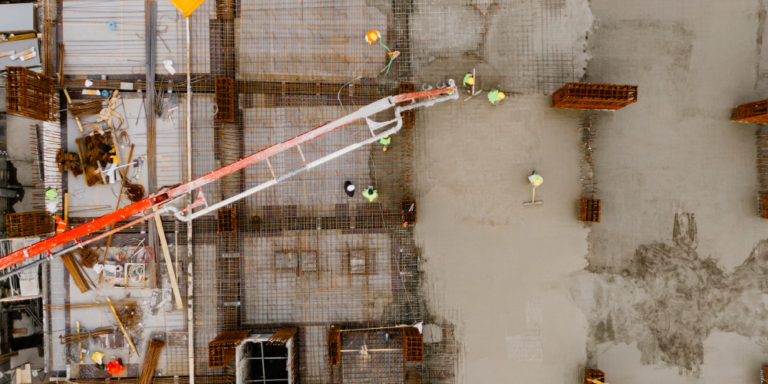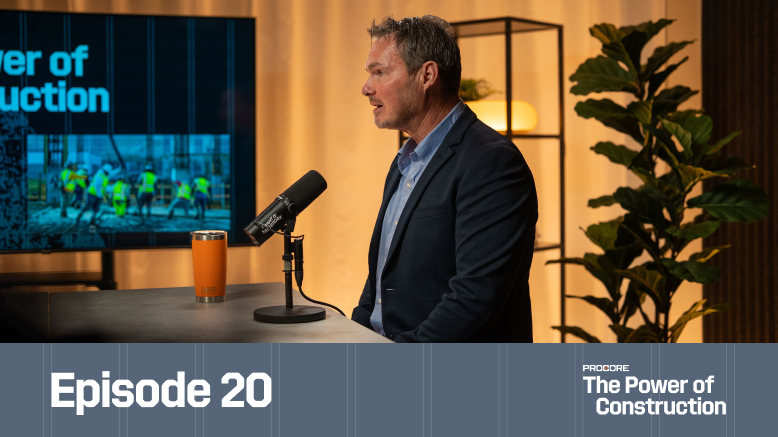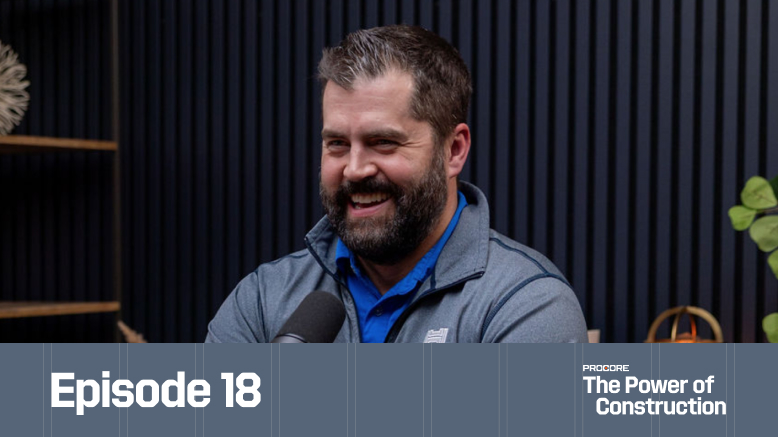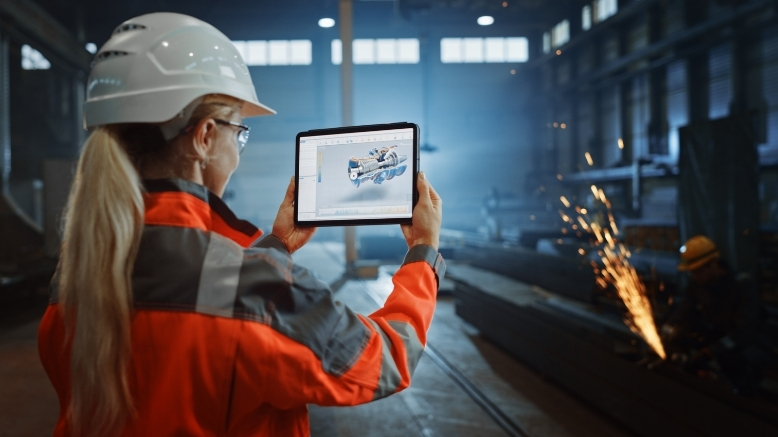— 8 min read
To Prevent Construction Deaths, Focus on Details


Last Updated May 1, 2025

Jacob Kunken
Solutions Engineer, Heavy Civil
28 articles
Jake Kunken currently works as Solutions Engineer for Procore's Heavy Civil division. He brings 14 years of experience working in various construction roles in New York and Colorado, including laborer, assistant carpenter, carpenter, assistant superintendent, superintendent, construction manager, safety manager, and project manager. Jake also spent time in EHS as an environmental engineer for Skanska. He’s worked on more than 40 commercial projects from ground-up, to heavy civil, hospital work, and tenant improvement. Jake studied Ecological Technology Design at the University of Maryland.

Bob Hanes
Founder
15 articles
Bob Hanes is a professional writer and entrepreneur. He previously worked as a military sales and applications engineer for an aerospace firm, and cofounded a biotech company that creates drug screening solutions for the pharmaceutical industry. Bob has an MBA from the University of Buffalo in Logistics, Materials, and Supply Chain Management, and a BE in Mechanical Engineering. He is an avid Buffalo Bills fan.
Last Updated May 1, 2025

The construction industry consistently ranks high on the list of the deadliest industries. Dangerous environments and unpredictable factors expose hundreds of thousands of workers to potentially deadly situations on every jobsite. In this article, we explore the most common causes of death in construction — and what construction leaders can do to keep their people safe.
Table of contents
Construction can be deadly, but safety is improving.
In 2021, 981 deaths were reported in construction, the highest of any industry. The Bureau of Labor Statistics reported at the end of 2024 that 1 in 5 of all American workplace fatalities were in the construction industry. On average, about 1 in 10,000 construction workers die each year.
Deaths are still relatively rare in an industry as dangerous as construction and excavation. In fact, a construction worker is 10 times more likely to drown than to die on the jobsite in a given year. Surrounded by comparatively more significant threats, many construction workers become complacent about safety – especially when leaders don’t make it a priority. After years or decades on a jobsite without a serious accident, workers often become desensitized to the dangers.
In addition, occupational safety generally has seen tremendous improvement in recent history – worker deaths across all industries in the US dropped by almost two-thirds from 1970 to 2020. Advancements in technology, increased access to safety equipment, and more targeted enforcement by regulatory agencies have contributed to these improvements.
Increasingly, construction executives are adopting safety measures as a preventive rather than a reactive measure. And thanks to comprehensive training resources and predictive software, construction jobsites are continually becoming safer.
4 Common Causes Of Construction Deaths
While there are a variety of construction hazards, about 65% of all construction deaths stem from four types of accidents: falls, struck-by incidents, caught-in/between accidents, and electrocutions. To prevent deadly accidents, construction firms must thoroughly understand and actively mitigate the unique risks that each of these accidents presents.
Learn more about the most common accidents on construction sites.
1. Falls
Construction sites have many opportunities for falls due to uneven surfaces, openings in floors or walls, work in tall buildings, and more. Any small mistake can result in a fall that can end in tragedy. In 2021, the construction industry saw a 5.9% increase in fatal falls, slips, and trips compared to the previous year, climbing from 83 to 91.
These statistics underline the importance of fall protection systems, safety training, and the usage of personal protective equipment such as harnesses and safety nets. OSHA has specific guidelines to prevent falls, outlining employers' responsibility to protect workers from fall hazards.
2. Struck-By Accidents
Struck-by incidents are another deadly hazard in the construction sector. These accidents occur when vehicles, equipment, or even falling objects hit workers. In 2020 alone, struck-by incidents led to 150 deaths and 14,000 nonfatal injuries in the construction industry.
Vehicular accidents often occur at access and exit points of jobsites, emphasizing the need for improved site management, vigilant monitoring, and robust safety protocols. All jobsite workers should be trained on non-verbal communication with vehicle and equipment operators, including eye contact and standard hand signals. OSHA also offers detailed resources on reducing struck-by hazards.
3. Caught-In or Between Accidents
Caught-in or between incidents occur when workers are trapped or crushed in or between objects. Some of these situations include being caught in machinery, crushed between moving and stationary objects, buried in trench collapses, and more. In 2019, the construction industry witnessed 59 fatalities due to caught-in/between incidents.
Understanding these risks and implementing adequate preventive measures, such as machine guarding and regular site inspections, can decrease this type of incident. Hypervigilance and jobsite awareness are crucial components in avoiding these injuries — especially when site logistics can change daily or weekly.
OSHA's Caught-In or -Between Hazards guide provides additional information on identifying and avoiding these hazards.
4. Electrocutions
Contact with electricity on construction sites is relatively common, with an average of 143 construction workers killed each year. These fatalities typically occur due to contact with overhead power lines, improper grounding of equipment, or faulty wiring.
Employing robust safety practices, such as regular inspection of tools and equipment, ensuring proper electrical installations, and training on electrical safety and personal protective equipment (PPE), can significantly mitigate this risk.
Implementing a clear, consistent Lockout/Tagout (LOTO) program is essential to electrical and equipment safety. LOTO ensures that any equipment that can expose workers to hazardous energy can be shut down and prevented from accidental operation, especially during maintenance or service to the equipment.
OSHA's Electrical Standards provide comprehensive guidelines for electrical safety in the construction sector.
Courses about construction.
For construction.
Unlock your career potential with our free educational courses on Health & Safety, Data in Construction, and more.
Preventing Deaths in Construction
Preventing deaths in construction requires a multifaceted approach. It requires the collective effort of the entire team, from high-level management to every worker on site. Working together, all parties can ensure that everyone makes it home safely at the end of the workday.
Focus on the details.
In construction, deaths are rarely the result of a single mistake. Jobsite accidents and fatalities are more often the result of a series of small lapses, each of which may seem inconsequential on its own.
For example:
- The superintendent skips a morning checklist.
- Some of the crew miss the weekly stand-down.
- The crane inspection doesn’t happen.
- A worker fails to make eye contact with the crane operator.
- The crane operator forgets to engage the hoist brake.
The fifth mistake wouldn’t necessarily have killed someone if the other four events occurred as planned. Sometimes, it’s virtually impossible to pin responsibility on a single event or mistake. Accidents rarely happen because a single factor or action was incorrect — rather, they are often the result of several missed steps or preventive measures.
An effective site-specific safety plan should include detailed safety protocols, regular inspections, and monitoring processes for crew members to keep everyone safe. These details are often overlooked or waved off in favor of practicality — but details are what keep crew members safe. Catching and correcting even one mistake can prevent an untimely death.
Use training as a proactive tool.
Safety meetings are too often held as a reaction to a serious injury or death. Instead, stand-downs and other training events are more useful as a proactive tool – an ongoing process to instill safety consciousness among construction workers before accidents occur.
A safety culture is built on open, proactive communication. An accident, injury, or death on another project can be an effective opportunity for discussion, where the team explores the details leading up to the incident, and what steps they are taking to prevent a similar accident on their own jobsite.
When I was a superintendent I was required to do weekly safety toolbox talks. Each week, I would go to the crew with a story that highlights a particular danger. For example, a worker was using a powder actuated tool – we called it a 'bang bang' – and wasn't wearing eye protection.
"He shot it into the ceiling, and had to go to the doctor to get rock removed from his eye. Very few crew members forgot their safety glasses after that. Safety messages get driven home with examples, and stories. It is scary to talk about these things. It adds a level of realness.

Jacob Kunken
Solutions Engineer, Heavy Civil
Procore Technologies
Lead by example.
On any jobsite – and in any company – crew members look to their leaders for a sense of direction. This is true in virtually all aspects: quality of work, work ethic, and attention to health and safety.
Superintendents, forepersons, and project managers often rise in the ranks due in large part to their situational awareness. They are constantly walking the jobsite looking for quality issues: A corner that wasn’t caulked, a post out of plumb, or a light fixture in the wrong place. Leaders earn much respect for their hypervigilance. Workers on the jobsite know they are paying attention to every detail.
Good jobsite leaders apply this hypervigilance to safety as well. Wearing PPE and using safety gear correctly – and gently calling others out when they see a slip – sends a strong signal to the rest of the team that safety is everyone’s responsibility (and that they’re paying attention).
Leaders build loyalty when they show they care about the safety of their workers. Crew members want to know that their superintendent will do everything in their power to make sure everyone on the jobsite goes home in one piece at the end of the day.
Celebrate small victories.
Every construction project involves many small decisions and actions that happen daily on jobsites. Each of these decisions – using tools and equipment correctly, wearing the appropriate PPE, conducting thorough and regular safety inspections – can make the difference between saving a life or losing one.
Unfortunately, when preventive measures are followed – each small decision that keeps someone safe – the outcome is often ignored and rarely celebrated. After a serious accident or death on a construction site, the details are scrutinized to identify the cause. However, when one of those small decisions averts a crisis, work continues as usual. Few recognize the potential tragedy that could have occurred.
Construction leaders, especially those on the jobsite regularly, should make time and space to celebrate crew members who make safe decisions, no matter how small. Recognition of one person’s vigilance and attention to detail encourages the rest of the team to step up.
Making Safety a Priority
Construction is inherently dangerous work, and freak accidents are always possible — preventing every death is impossible. However, a comprehensive safety program with monitoring and inspections, daily reporting, and strict adherence to the correct use of safety equipment and PPE can help ensure everyone on the jobsite is making decisions that prevent a potential life-taking incident.
Digital tools like daily log software have transformed from mere record-keeping devices to proactive instruments. Companies can use these tools to help predict jobsite risks and anticipate potential safety incidents. By tracking safety data – including near misses as well as injuries or accidents – project managers have the ability to identify trends, foresee potential issues, and plan preventive action to address issues before a deadly accident occurs.
Was this article helpful?
Thank you for your submission.
100%
0%
You voted that this article was . Was this a mistake? If so, change your vote
Scroll less, learn more about construction.
Subscribe to The Blueprint, Procore’s construction newsletter, to get content from industry experts delivered straight to your inbox.
By clicking this button, you agree to our Privacy Notice and Terms of Service.
Thank you!
You’re signed up to receive The Blueprint newsletter from Procore. You can unsubscribe at any time.
Categories:
Written by

Jacob Kunken
Solutions Engineer, Heavy Civil | Procore Technologies
28 articles
Jake Kunken currently works as Solutions Engineer for Procore's Heavy Civil division. He brings 14 years of experience working in various construction roles in New York and Colorado, including laborer, assistant carpenter, carpenter, assistant superintendent, superintendent, construction manager, safety manager, and project manager. Jake also spent time in EHS as an environmental engineer for Skanska. He’s worked on more than 40 commercial projects from ground-up, to heavy civil, hospital work, and tenant improvement. Jake studied Ecological Technology Design at the University of Maryland.
View profile
Bob Hanes
Founder | Resonant Lab
15 articles
Bob Hanes is a professional writer and entrepreneur. He previously worked as a military sales and applications engineer for an aerospace firm, and cofounded a biotech company that creates drug screening solutions for the pharmaceutical industry. Bob has an MBA from the University of Buffalo in Logistics, Materials, and Supply Chain Management, and a BE in Mechanical Engineering. He is an avid Buffalo Bills fan.
View profileExplore more helpful resources

Why Don’t We Protect the Whole Person?
Behind every safety incident is a person — and behind that person is a story we rarely ask about. Were they already exhausted before they arrived on site? Did they...

What Drives Better Safety Outcomes—Carrot, Stick, or “Zero Harm”?
On paper, construction has never looked safer. In reality, mental health claims are rising, workers are disengaged and the compliance playbook is broken. Garry Mansfield, co-founder of Scratchie, argues the...

How Close Are We to Bridging the Design-Build Divide?
For decades, construction decisions have often been made based on gut instinct. But what if the real barrier to transformation isn’t technology—it’s the divide between design and construction? In episode...

Gain Without Pain: Leveraging Technology for Strategic Safety Programs
In safety, there is always room for improvement, and technology creates the ability to scale safety programs that drive risk mitigation, operational efficiencies and competitive advantage. In fact, builders who...
Free Tools
Calculators
Use our calculators to estimate the cost of construction materials for your next project.
Templates
Find a template to help you with your construction project tasks.
Material Price Tracker
Get the latest U.S. retail prices and view historical trends for common building materials.
Glossary
Explore key terms and phrases used in the industry.
